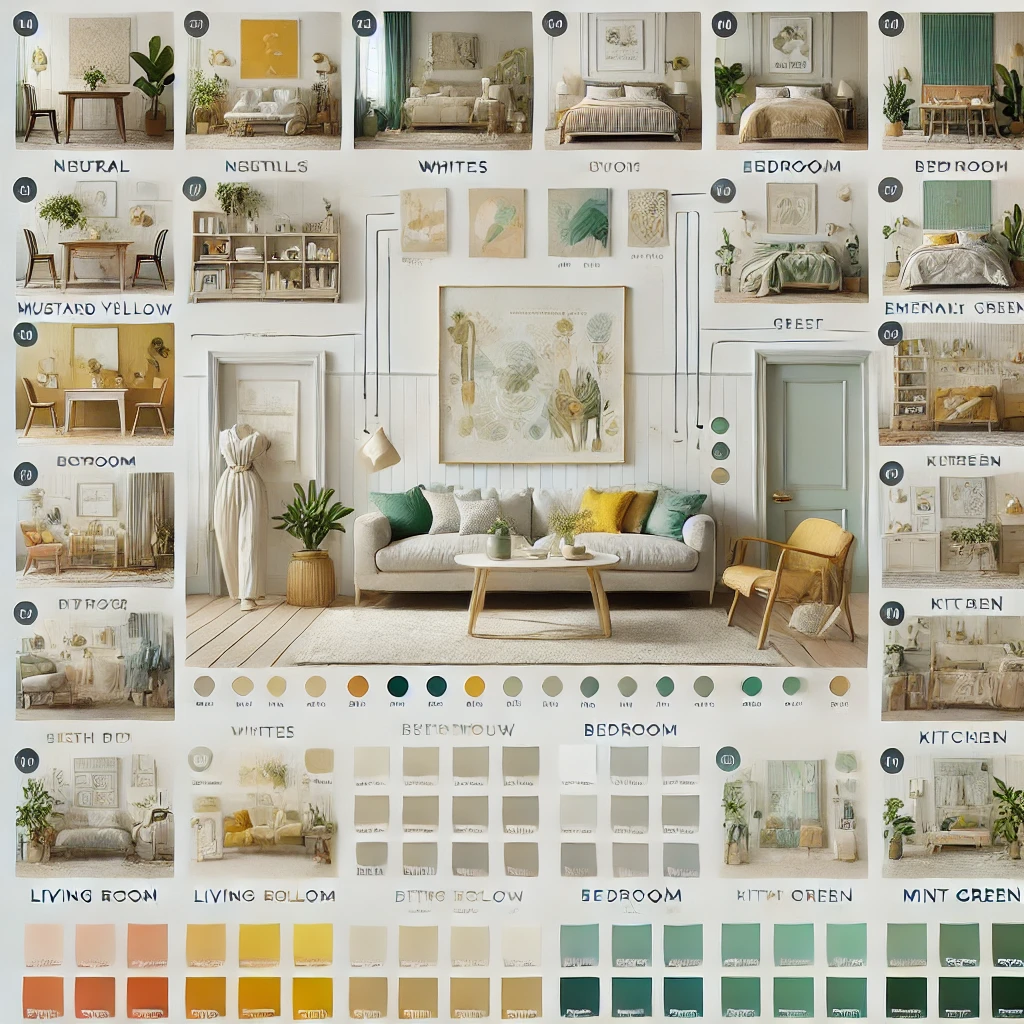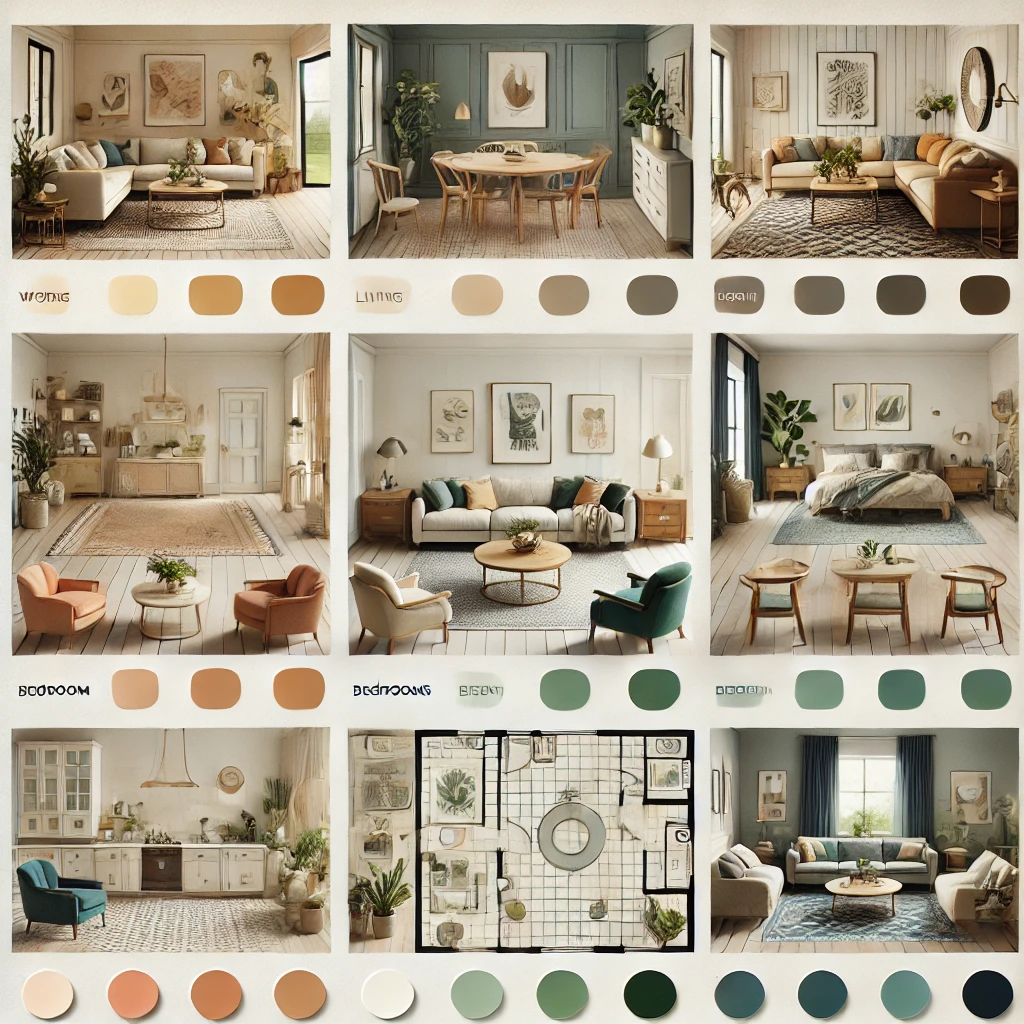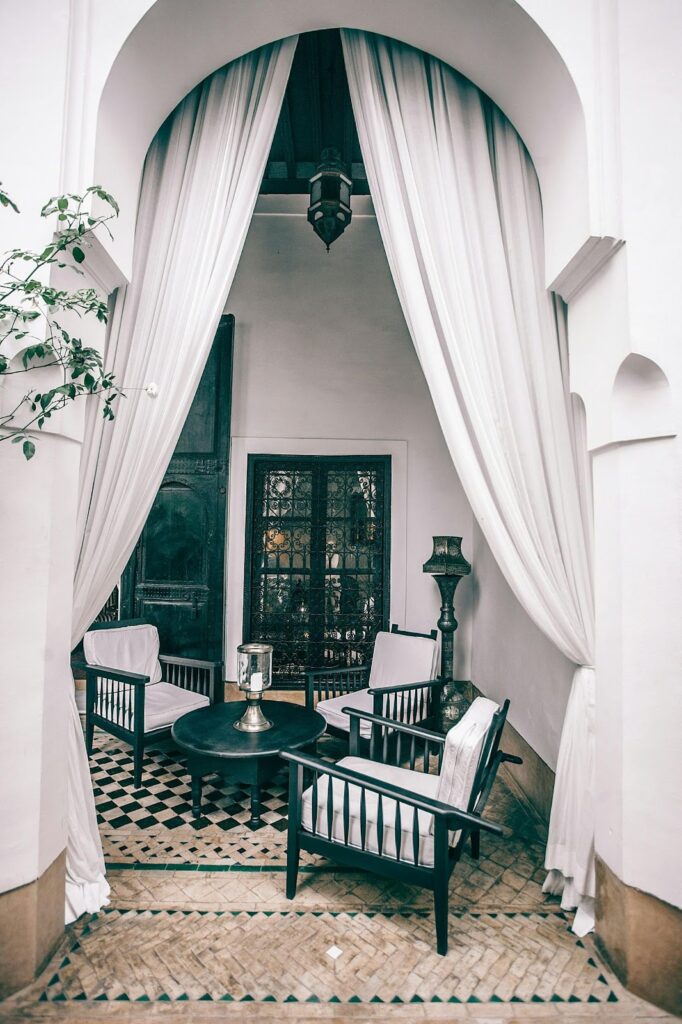Creating a beautiful and harmonious living space begins with choosing the right colors for your home decor. The colors you select not only define the aesthetic appeal of your home but also influence the mood and atmosphere. Here’s a complete guide on How to Choose the Right Home Decor Colors that resonate with your personality and style.

Understanding the Importance of Color in Home Decor
How Colors Affect Mood and Atmosphere
Colors have a profound impact on emotions and can set the tone for any room. Warm tones like red, orange, and yellow bring energy and excitement, while cool shades like blue and green create a calming and relaxing environment. Neutral tones such as white, beige, and gray offer a sense of balance and sophistication.
- Living rooms benefit from inviting colors like warm beige or muted greens.
- Bedrooms thrive with soft blues or calming lavender for better relaxation.
- Kitchens can feel lively with sunny yellows or invigorating shades of red.
The Psychology of Colors in Interior Design
Understanding color psychology helps in creating spaces that evoke desired emotions:
- Red: Passionate and bold, ideal for accents in dining areas.
- Blue: Calm and serene, perfect for bedrooms and bathrooms.
- Yellow: Cheerful and uplifting, great for kitchens and small spaces.
- Green: Balancing and rejuvenating, suitable for living rooms and offices.
- Gray: Sophisticated and versatile, works well in modern homes.

Assessing Your Space Before Choosing Colors
Natural Light and Room Orientation
The amount of natural light in a room significantly impacts how colors appear:
- North-facing rooms tend to have cooler light; use warm tones like cream or soft yellow.
- South-facing rooms enjoy warm, natural light; experiment with cool colors like blue or green.
- East-facing rooms get bright morning light, suitable for vibrant hues.
- West-facing rooms shine in the evening, making them ideal for warm or neutral colors.
Size of the Room and Its Impact on Color Selection
- Small spaces: Light colors like white or pastel shades create the illusion of more space.
- Large spaces: Darker tones add depth and make vast areas feel cozy.
Existing Furniture and Decor as a Starting Point
Match your wall colors with existing furniture and decor. For example:
- Pair neutral-colored furniture with bold wall colors for contrast.
- Use patterned cushions or rugs as inspiration for accent wall shades.
Tips to Choose the Perfect Color Palette
Deciding on a Theme or Style for Your Home
Choosing a theme simplifies the color selection process. Popular themes include:
- Modern: Neutral tones like gray, white, and black.
- Bohemian: Earthy colors with pops of jewel tones.
- Rustic: Warm shades like brown, terracotta, and beige.
Using a Color Wheel to Find Complementary Colors
A color wheel is a helpful tool for identifying complementary, analogous, or monochromatic color schemes:
- Complementary colors (e.g., blue and orange) create vibrant contrasts.
- Analogous colors (e.g., green, yellow-green, and yellow) produce harmonious effects.
- Monochromatic schemes (e.g., various shades of blue) add depth.
Testing Paint Samples Before Committing
Always test paint swatches on your walls. Observe how they look at different times of the day under natural and artificial light.
Popular Home Decor Color Combinations
Neutral Tones for a Timeless Look
Neutral palettes, including beige, gray, and taupe, offer:
- Versatility across various design styles.
- A calming and understated backdrop for accent colors.
Bold Colors for a Statement Decor
Use bold colors like emerald green, deep navy, or mustard yellow as statement pieces:
- Add bold accents through furniture or wall art.
- Balance with neutral or lighter shades to prevent overwhelming the space.
Pastels for a Soft and Calming Ambiance
Pastel shades like blush pink, mint green, or powder blue:
- Work well in bedrooms, nurseries, and bathrooms.
- Create a soothing environment while maintaining style.
Adapting Colors to Different Rooms
Living Room Color Ideas
- Use neutral shades as a base and add vibrant cushions or throws for contrast.
- Experiment with accent walls in deep colors like navy or emerald.
Bedroom Color Combinations
- Opt for relaxing colors like pale blue, sage green, or lavender.
- Add depth with darker shades for bedding or curtains.
Kitchen and Dining Area Color Choices
- Bright yellows or whites make kitchens feel welcoming.
- Dark tones like charcoal or navy add sophistication to dining spaces.
Mistakes to Avoid When Choosing Colors
Ignoring Lighting and Its Effects
The same color can look entirely different depending on the lighting. Always:
- Check how colors appear in both natural and artificial light.
- Avoid overly glossy finishes in rooms with harsh lighting.
Overusing Bold or Dark Colors
While bold colors make a statement, overusing them can:
- Make a room feel smaller or overwhelming.
- Reduce the room’s versatility for future decor changes.
Forgetting to Consider the Entire Home’s Flow
Ensure your chosen colors transition smoothly between rooms to create a cohesive look. For example:
- Use complementary tones across shared spaces.
- Maintain a consistent style and theme.
How to Keep Your Home Decor Colors Cohesive
Balancing Accent Colors with Base Tones
Accentuate neutral walls with:
- Bold cushions, rugs, or curtains.
- Art pieces or decor items in vibrant hues.
Using Textures and Patterns for Added Depth
Combine textures like wood, metal, and fabric to:
- Enhance visual interest.
- Create a layered and sophisticated look.
Coordinating Decor Accessories with Wall Colors
Ensure accessories like lamps, vases, and wall art complement your color palette for a harmonious appearance.
FAQs About Home Decor Colors
What are the best colors for small spaces?
Light and neutral colors, such as white, beige, or pastel shades, are best for small spaces as they create the illusion of openness.
How do I make my home look more spacious with colors?
Stick to monochromatic schemes and light tones. Reflective finishes and strategically placed mirrors also enhance the spacious feel.
Can I mix warm and cool colors in one room?
Yes, mixing warm and cool colors creates a balanced and dynamic look. For example, pair warm terracotta accents with cool gray walls for harmony.

